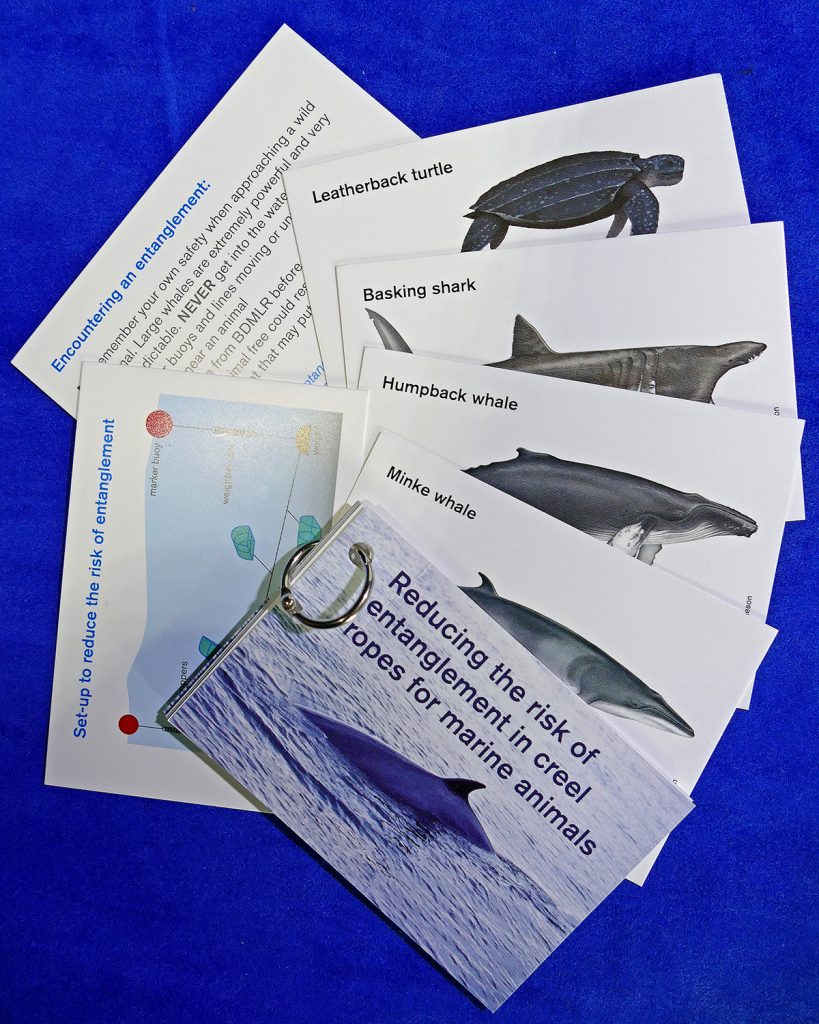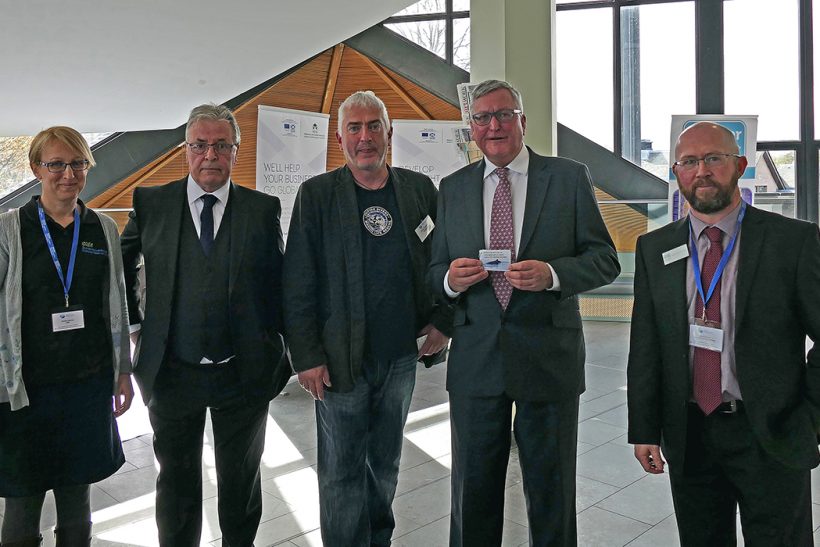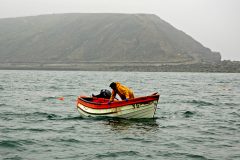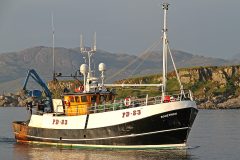Entanglement, when marine animals become trapped or tangled in fishing gear, can be a problem, reports Kelvin Boot.
Above: Cabinet Secretary Fergus Ewing with some of the project partners. Left-right: Kirstie Dearing (SNH), Alistair Sinclair (SCFF), Noel Hawkins (BDMLR), Fergus Ewing MSP, David Donnan (SNH).
When the animal is a large whale, basking shark or leatherback turtle, the problem gets really big. For the animal it may result in death – often lingering – for the fisherman it can mean the loss of valuable catch, nets, lines and creels and be a threat to livelihood; there are no winners.
Recognising that this is a shared problem, and responding to a request from Scottish creelers, a unique partnership has come together to learn more about how, why and where it is happening and, most importantly, what can be done when a large animal becomes trapped, or better still how can it be prevented.
Alistair Sinclair, the national coordinator for the Scottish Creel Fishermen’s Federation instigated the project by getting together with Scottish Natural Heritage, British Divers Marine Life Rescue (BDMLR), and Whale and Dolphin Conservation to see what they could come up with to minimise entanglement occurrences, while another partner, the Scottish Marine Mammals Stranding Scheme, is asking fishermen to send photos of any dead or stranded animals, which can provide a wealth of information, even following their sad demise.

The booklet ‘Reducing the risk of entanglement in creel ropes for marine animals’ is available from the SCFF.
By working together and pooling knowledge and experience, the consortium has established protocols and guidelines on what to do and who to call if there is an incident or a stranding.
All of this is brought together in a credit-card-sized guide, which fits on a key ring and so is always handy. Further advice in the guide includes species identification, useful contact numbers and hints on setting gear to reduce the risk of entanglement.
So far, the initiative has met with enthusiasm from all sides. “The creel fishermen have been very responsive, they totally get what we’re trying to do, and are buying into it – that’s not a problem at all,” added Alistair Sinclair, who made the initial approaches to SNH.
David Donnan from SNH was in no doubt that ‘the success of the project is going to be built around all the different partners working together to achieve a solution’.
Noel Hawkins of BDMLR said: “It’s the fishing industry that is key to successfully releasing trapped animals. All the success cases we’ve had have involved the fishing industry, that’s a positive I’d like to emphasise; we’re keen to work with the fishermen.”
Fergus Ewing MSP and Cabinet Secretary responsible for fisheries made a point of discussing the project at the recent Scottish Inshore Fisheries Conference, when he stated: “These are great first steps, and the group will continue to work together alongside the fishing industry to share information that will reduce entanglements in future.”
BDMLR hopes that this initiative will be picked up in other parts of the UK, but in the meantime, for more information visit the SCFF website where you can also download a copy of the booklet.
Read more news from Fishing News here.






